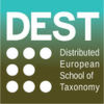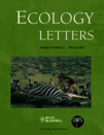FishBase on the US and CA servers (www.fishbase.us and www.fishbase.ca) are now updated to version April 2015.

BiodivERsA3 has officially launched its 2015 pan-European joint call for research proposals. The call, co-funded by the European Commission, will focus on understanding and managing the biodiversity dynamics to improve ecosystem services and functioning.
BiodivERsA is a network of 29 research-funding agencies across 18 European countries. It is an ERA-NEt Co-fund, funded under the EU’s Horizon 2020 Framework Programme for Research and Innovation. BiodivERsA works to coordinate national research programmes on biodiversity across Europe and to organize international funding for research projects in this field.
The complete announcement on this call, including details on the topics, is listed here.
Scientific teams are invited to form international consortia comprising research groups from at least three countries participating in the BiodivERsA call. The complete list of participating countries can be found here.
The deadline for submission of pre-proposals (mandatory) is set on Monday 20 July 2015, 17:00 GMT +1:00. More information on the time schedule can be found here.
The 4th edition of the DEST course ‘BASICS of TAXONOMY’ will take place from 5 to16 October 2015 at the Sven Lovén Centre for Marine Sciences, Kristineberg, Sweden.
Taught by renowned experts in their field, the course topics are:
- DELTA
- Digital drawing
- Scientific illustration
- Scientific writing and communication
- Scratchpads, a tool to build, publish and share information on the web
Target audience: MSc students, PhD students, early career researchers
Thanks to funding of the Royal Swedish Academy of Sciences, this 2-weeks course is offered at a discounted rate of 550 EUR.
Fee includes accommodation and meals.
The Swedish University of Agricultural Sciences offers a new position for Postdoctoral researcher in ecology: Spatial population dynamics at a species’ northern range margin at the Department of Ecology.
The department conducts empirical and theoretical research for sustainable forest and agricultural production and efficient biological conservation. Research on populations, communities, and ecosystems forms the foundation for studying the influence of land use and climate on animals, plants, soils nutrient status, and greenhouse gas balances. Solutions are sought that will mitigate climate change, preserve threatened species, benefit biological diversity and ecosystem services, and control pests in forest and agricultural landscapes as well as in urban areas.
Duties: The postdoc researcher will study spatial population dynamics in an insect at the northern margin of its global distribution, by taking advantage of a data from a long-term study of the butterfly Pyrgus armoricanus. The main purpose of the project is to understand how climate, habitat fragmentation and habitat quality influence the regional distribution and population dynamics of this butterfly, and to use this knowledge to predict population persistence and distribution in an altered climate and after changed land use. The successful candidate wull also analyze time-series data on population dynamics in relation to weather and habitat quality. There will also be opportunities to model future regional distribution or population persistence under scenarios of future land use and climate change.
Place of work: Uppsala
Form of employment: Temporary employment, 1 year.
Deadlines: June 1, 2015
For more information on requirements and how to apply, lease visit the official job offer page: http://www.slu.se/sv/om-slu/fristaende-sidor/aktuellt/lediga-tjanster/las-mer/?eng=1&Pid=1875
A new aticle published in Ecology Letters looks into the indirect interactions among tropical tree species through shared rodent seed predators. The reasearch is part of the work of EU BON postdoc Carol X. Garzon-Lopez.
Abstract: The coexistence of numerous tree species in tropical forests is commonly explained by negative dependence of recruitment on the conspecific seed and tree density due to specialist natural enemies that attack seeds and seedlings (‘Janzen–Connell’ effects). Less known is whether guilds of shared seed predators can induce a negative dependence of recruitment on the density of different species of the same plant functional group. We studied 54 plots in tropical forest on Barro Colorado Island, Panama, with contrasting mature tree densities of three coexisting large seeded tree species with shared seed predators. Levels of seed predation were far better explained by incorporating seed densities of all three focal species than by conspecific seed density alone. Both positive and negative density dependencies were observed for different species combinations. Thus, indirect interactions via shared seed predators can either promote or reduce the coexistence of different plant functional groups in tropical forest.
Carol X. Garzon-Lopez et. al. (2015) Indirect interactions among tropical tree species through shared rodent seed predators: a novel mechanism of tree species coexistence. Ecology Letters. doi: 10.1111/ele.12452
The ASEAN Centre for Biodiversity (ACB) publishes a monthly newsletter to keep stakeholders informed of news about biodiversity concerns and efforts that are relevant to the ASEAN region, including about the work of ACB.
In their latest issue they feature articles about:
- ASEAN-Japan cooperation on nature parks management
- Phl hosts international conservation financing conference
- ACB briefs German researchers on coastal ecosystem management
And many more news, features and updates. To read the newsletter, please go to: http://e-news.aseanbiodiversity.org/acb_eweb_mar15/#phl
The ASEAN Centre for Biodiversity (ACB) is an intergovernmental regional centre of excellence that facilitates cooperation and coordination among the members of ASEAN, and with relevant governments and organizations on the conservation and sustainable use of biological diversity. Protecting Southeast Asia’s rich but highly threatened web of life is its main goal.
GEO BON announces the launch of their newly designed webpage located at the same address: www.geobon.org
The site’s home page welcomes visitors with a clean uncluttered design with featured content focused on GEO BON's to improve the acquisition, coordination and delivery of biodiversity information and services to users, particularly decision-makers, achieved through easier navigation to content, applications and products, but also for the site to serve as a data portal in future.
Go and explore if you haven't done so: www.geobon.org
The European Environment Agency has published its flagship report, the European Environment - State and Outlook 2015 (SOER 2015) .
It contains excellent online resources with detailed information, including downloadable graphs, tables and images. The report is compiled every five years and includes an assessment of trends and prospects, information on individual countries and regions, cross-country comparisons and the global context.
Aggregated level information on climate change, impacts, vulnerability and adaptation is included.
Read more and find the report online here: http://www.eea.europa.eu/soer
FishBase on the US and CA servers (www.fishbase.us and www.fishbase.us) are now updated to version February 2015.
The domain www.sealifebase.org is now served with load balancing between the two mirrors below.
- sealifebase.ca (UBC, Vancouver)
- sealifebase.de (Geomar, Kiel)
You will see which mirror is serving at the bottom left corner of the page.
The DE domain is recently acquired.

A new policy brief featured a recent issue of Science for Environment Policy highlights a new study suggesting that the Aichi biodiversity targets, set by the UN Convention on Biological Diversity, are unlikely to be achieved by 2020— despite some progress towards halting the global loss of biodiversity. The authors of the study call for policy responses to be strengthened if the ongoing loss of nature is to be stopped.
The loss of biodiversity affects the healthy functioning of ecosystems and the benefits they provide to people. The ongoing loss of the world’s natural diversity, which underpins all life, prompted Parties to the UN Convention on Biological Diversity (CBD) at the World Summit for Sustainable Development in 2002 to pledge reductions in the global decline in biodiversity by 2010.
The 2010 targets set by the CBD were missed. Consequently, a new set of goals to curb the loss of species and ecosystem services, supported by the 20 Aichi targets, were adopted by 193 nations in 2010. The Aichi targets, to be achieved by 2020, are part of the global Strategic Plan for Biodiversity 2011–2020.
A global panel of 51 experts, drawn from a wide range of institutions, has recently assessed mid-term progress towards meeting these targets. They based their assessment on an analysis of 55 indicators (for example, extent of wetlands) selected from 163 potential indicators, which are key measures of the world’s biodiversity. They built statistical models for each indicator, based on their status in 2010 and data trends and then projected changes to the indicators by 2020. The value for each indicator in 2010 was then compared with the projected value in 2020 to assess progression towards the 2020 Aichi targets.
Read more in the original SEP policy brief.
Original Study:
Tittensor, D.P., Walpole, M., Hill, S.L.L. et al. (2014) A mid-term analysis of progress toward international biodiversity targets. Science 346 (6206): 241- 244. DOI:10.1126/science.1257 484
The European Environment Agency (EEA) is organising an open competition with a view to recruiting a contract agent to work as Project Manager within the area of biodiversity indicators and assessments and further with a view to establishing a reserve list.
THE AGENCY
The EEA is an Agency of the European Union (EU) and one of the decentralised Union bodies. The EEA aims to support sustainable development and to help achieve significant and measurable improvement inEurope’s environment, through the provision of timely, targeted, relevant and reliable information to policy-making agents and the public.
More information is available on the official EEA page: http://www.eea.europa.eu/about-us/jobs/eeavacancy.2015-01-14.3625557226
A new paper describing the PREDICTS database has been published and is now available in open-access publication in Ecology and Evolution.
PREDICTS - Projecting Responses of Ecological Diversity In Changing Terrestrial Systems - is a collaborative project aiming to use a meta-analytic approach to investigate how local biodiversity typically responds to human pressures such as land-use change, pollution, invasive species and infrastructure, and ultimately improve our ability to predict future biodiversity changes.
Abstract:
Biodiversity continues to decline in the face of increasing anthropogenic pressures such as habitat destruction, exploitation, pollution and introduction of alien species. Existing global databases of species’ threat status or population time series are dominated by charismatic species. The collation of datasets with broad taxonomic and biogeographic extents, and that support computation of a range of biodiversity indicators, is necessary to enable better understanding of historical declines and to project – and avert – future declines. We describe and assess a new database of more than 1.6 million samples from 78 countries representing over 28,000 species, collated from existing spatial comparisons of local-scale biodiversity exposed to different intensities and types of anthropogenic pressures, from terrestrial sites around the world. The database contains measurements taken in 208 (of 814) ecoregions, 13 (of 14) biomes, 25 (of 35) biodiversity hotspots and 16 (of 17) megadiverse countries. The database contains more than 1% of the total number of all species described, and more than 1% of the described species within many taxonomic groups – including flowering plants, gymnosperms, birds, mammals, reptiles, amphibians, beetles, lepidopterans and hymenopterans. The dataset, which is still being added to, is therefore already considerably larger and more representative than those used by previous quantitative models of biodiversity trends and responses. The database is being assembled as part of the PREDICTS project (Projecting Responses of Ecological Diversity In Changing Terrestrial Systems –
Original Source:
Hudson L. N. et. al. (2014) The PREDICTS database: a global database of how local terrestrial biodiversity responds to human impacts. Ecology and Evolution, Vol 4, 24: 4701–4735. DOI: 10.1002/ece3.1303




 RSS news
RSS news







 FB_SLB_logos copy.jpg
FB_SLB_logos copy.jpg



